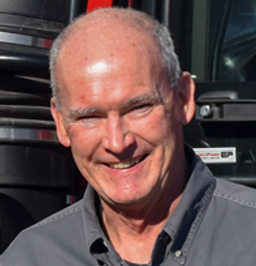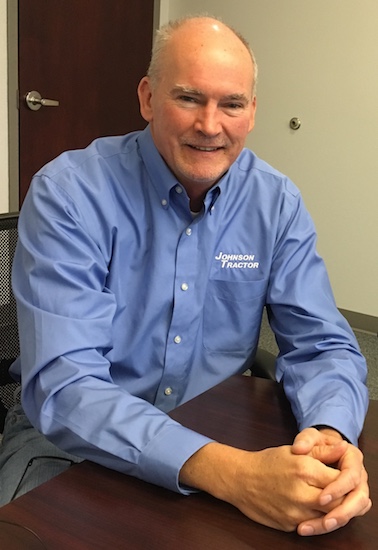In the farm, outdoor power or construction equipment (CE) retail dealership business, one critical demographic is the number of stores you operate. Another is the number of employees in your dealership(s). Over 40 years in the industry, I've seen various shapes and sizes of dealerships, ranging from small operations with fewer than 5 employees to larger ones with over 100 employees. However, the focus here will be on the size of dealership complexes measured by the number of locations rather than the number of employees.
While the number of locations doesn't necessarily indicate total revenue or profitability, it's the most visible growth indicator. Many customers in our industry are growth-oriented, constantly expanding their operations. Similarly, original equipment manufacturers (OEMs) prefer dealing with a few well-capitalized dealers rather than numerous smaller ones. Thus, dealers are squeezed between larger customers and more influential OEMs.
After retiring as a dealership owner/operator, I joined the Machinery Advisors Consortium (MAC), known for contributing to the annual Big Dealer Report published by Ag Equipment Intelligence. This report documents farm equipment dealerships with 5 or more locations and defines them as "Big."
So, how big is too big? Most dealers started small and grew, perhaps by expanding their buildings or acquiring neighboring dealers. The Big Dealer Report shows that most dealers have grown, but the question remains: How big is too big?
Recently, Kubota informed their dealers that future sales and service agreements would limit the number of retail locations one ownership group may operate. This is the first instance I've seen where an OEM explicitly limits the number of outlets a dealer may have. While this limit is irrelevant to 99.9% of dealers now, it may become more significant in the future.
How Big Can We Get?
For those in growth mode, the critical question is: how big can we stand to get? In our society, growth is often seen as essential to success. A respected dealer recently told me that growth is crucial to remaining "relevant in the market," and I agree.
Many advisors in our industry believe that growing from 1 to 2 stores is the hardest step, especially if the second store is similar in size to the original. Growth often stems from having multiple family members in the business. Although there may be some growing pains, the cultures of the two stores will eventually align. Capitalization is crucial but usually manageable when growing one store at a time.
Expanding from two stores to four or five is a different challenge. Systems and processes for operational efficiency become critical, and the financial investment required typically increases debt or necessitates more partners. Management roles evolve, introducing new challenges. Many dealerships stall at this phase due to the increased headaches that come with growth, leading to an attitude of "we're big enough now."
“A respected dealer recently told me that growth is crucial to remaining relevant in the market"
Moving from a 4-5 store model to a 6-10 store operation can be achieved over time. However, many 4-5 store complexes may struggle to acquire another multi-store complex to grow further. This significant growth requires significant capital, both for the initial purchase and the working capital needed to manage a larger operation. At this stage, dealerships often require a board of directors, additional management layers and outside talent. If they survive the initial growing pains, they typically continue to expand. The question of "How big is too big?" shifts to "How much can we borrow?" or "Who can we find to manage this thing?"
Are We Too Big?
Once a dealership reaches 10 or more stores and is on solid financial ground, it typically has good people who naturally want to see growth. Strong leadership in the form of a CEO, CFO, COO and HR becomes essential. OEMs and lenders scrutinize exit plans, capitalization plans, and succession plans. Consolidators may include ESOPs, private equity or publicly traded entities. It is at this point, the question arises: Are we too big?
The answer to "How big is too big?" depends on several factors. The key for owners is understanding their comfort level with risk, control and growth potential. Questions to consider include how much risk they are willing to take, how much control they are willing to relinquish, and whether the next generation or leadership group can further expand. Ultimately, the decision comes down to personal goals and values, such as whether they want to be the biggest implement dealer, the happiest or both.
Securing help from various sources is crucial regarding growth and the associated risks and rewards. Don't be the person who doesn't know what they don't know.
Key Conclusions:
- Growth Complexity: The complexity and challenges of dealership growth vary significantly with each expansion phase, requiring different strategies, capital investments and management structures.
- OEM Influence: OEMs play a significant role in shaping dealership growth, as seen with Kubota's recent limitations on the number of retail locations. This highlights the evolving dynamics between dealers and manufacturers.
-
Personal Goals and Comfort Levels: The decision on how big a dealership should grow ultimately depends on the owner's comfort with risk, desire for control, and personal goals, making it a subjective rather than a purely an objective decision.

MAC member, Leo Johnson started selling farm equipment at the retail level in 1978 for a very small International Harvester dealership in Clinton, WI. After acquiring 50% ownership, Leo grew Johnson Tractor to a 5 store complex exceeding $140MM in annual sales with over 100 employees. Leo retired in 2021 and continues to farm approximately 1000 acres of corn and soybeans in southern Wisconsin. He has been active in industry leadership positions in the local, regional, and national levels.






